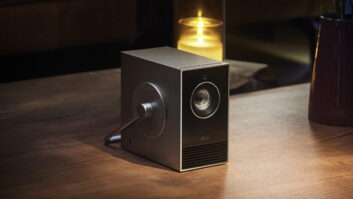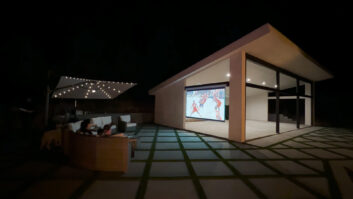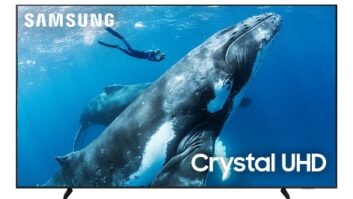While 3d Will Remain Elusive, 4k Video May Be The Next Big Thing
At this past April’s National Association of Broadcasters Expo (NAB)—the defining trade show for the entertainment production community—two of the predominant themes were 3D video and 4K resolution (4096×2160).
Of the two, 3D seems more like a fad. While it has improved a lot today, 3D has been around for decades without replacing 2D. Still, there are those who think that it is here to stay this time. For instance, Disney and DreamWorks have announced that all of their future animated releases will be 3D.
There are myriad ways to present 3D, including anaglyph, eclipse, polarization, and lenticular screens, and too many choices can hinder the acceptance of a technology (hello, HD-DVD). All of these approaches have their advantages and drawbacks, but virtually all require the use of glasses. (Lenticular screens don’t, but everyone has to be perpendicular to them.) To fit the higher-bandwidth stereoscopic images into existing video formats, some 3D systems cut either the horizontal or vertical resolution in half, which is blatantly going the wrong direction.
Many people also find that the 3D experience causes discomfort and eye strain. Kids don’t appear to mind it as much as adults.
NINE-MILLION PIXELS

Video in 4K resolution starts with the camera. This is a 4K RED ONE from RED Digital Cinema.Video with 4K resolution seems much more likely to become the next big thing. It is almost inevitable that we will see 4K displays because the higher resolution reaps benefits in clarity and realism that are plainly visible to all.
Another nice thing about 4K is that new projectors can be installed in existing systems to immediately produce improved results. The source material may still be 2K, but upscaled standard definition can look pretty darn good. Imagine that same kind of improvement upscaling Blu-ray to 4K. Unfortunately, Blu-ray’s current configuration will not support native 4K resolution content; the storage capacity simply isn’t there. However, I suspect that by the time 4K goes mainstream, content won’t be delivered on disc, so all you will need is big, whopping hard drives.
COMPARISONS
Back at NAB, the Japanese Broadcaster NHK was demonstrating both 3D and 4K using many of the same images. Without a doubt, the 4K demos were more satisfying and better supported the filmmaker’s storytelling process. The 3D effects were indeed impressive, but simultaneously uncomfortable and distracting with non-uniform picture quality across the screen. The 4K demo had a 20-foot screen, and you could walk up very close to it before seeing any evidence of pixels. For those of us who care about sharp picture quality and dislike the hassles of 3D, 4K is awesome.
GETTING READY
My advice would be to start future-proofing your systems with larger screens that can exhibit the benefits of 4K. We can finally use the cinema-standard 50-degree horizontal viewing angle, with the screen 0.9 times wider than the distance to the main seating.
This massive screen still needs to work for current HD and SD (yawn) formats, so opt for fourway masking and a projector with pre-settable zoom, focus, and light output. The image size can grow and shrink to accommodate the source resolution. You will see more and more of these types of products, which form the core of the PMI 2.0 technology set
Future-proofing for 3D is not as clear,

Anthony Grimani ([email protected]) is president of Performance Media Industries, a California-based acoustical engineering firm specializing in home theater design and calibration.because everything’s up in the air. The two most common formats right now are shutter glasses with a special 1080p60 display device, or anaglyph (used on the recent rash of 3D Blu-ray titles), which requires nothing more than red/cyan color glasses. Perhaps the most likely champion is a polarized system, which requires a silver screen (but what to do with it when you’re watching 2D?) You may also need special interconnects from the source to the projector, but what kind? Some glasses are active, so factor in getting power and/or control signals to them.
WHAT THE FUTURE HOLDS
On May 19, the Blu-ray Disc Association launched its 3D task force. It will be interesting to see what they find. Panasonic has already submitted a method (still using glasses) to convert two 1080i60 streams into a single 1080p24 3D image. If I had to make a prediction of where all this is going, I’d say that 4K will become a de facto standard. I hope 3D can finally establish itself as well, but it still has significant obstacles to overcome.







